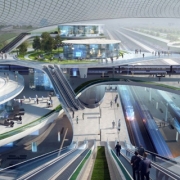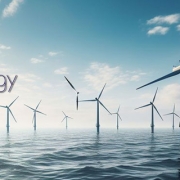Exploring modern methods of construction and mitigating disputes
Construction has undergone a remarkable transformation in recent years with the adoption of Modern Methods of Construction (MMC). These innovative approaches have revolutionised the construction process and introduced strategies to mitigate construction disputes. From modular construction to 3D printing, MMC techniques offer numerous benefits such as increased efficiency, sustainability, and affordability, while addressing common sources of conflicts. In this article, we delve into the exciting world of modern construction methods and explore how they can help minimise construction disputes while highlighting potential challenges.
Design and planning
Inadequate design and planning are common primary causes of construction disputes. Traditional methods often lead to misunderstandings, miscommunication, and errors during construction. However, modern methods such as Building Information Modelling (BIM) have significantly improved design and planning practices. BIM enables stakeholders to create a comprehensive virtual representation of the project, facilitating effective collaboration and reducing designrelated disputes. By identifying clashes and optimising design solutions before construction begins, BIM can minimise conflicts between parties and enhance project coordination.
While BIM has transformed information creation and dissemination, it does have drawbacks. Its effective implementation is expensive and complex, discouraging so far, its widespread adoption, especially on smaller projects and in less affluent regions. Differing levels of BIM adoption within a project team can also be an issue, as it relies on common standards and specific software and file formats. Compatibility issues and data loss may occur without adherence to these standards. Furthermore, BIM heavily relies on accurate and complete input data to generate reliable models. Flawed or incomplete data can lead to inaccuracies and rework during construction.
Local statutory requirements should also be considered when using MMC methods like modular construction. In the UK, the “Manual to the Building Regulations” published by HM Government, points out that existing approved technical guidance documents may not be applicable to MMC. Designers may need to go further to ensure compliance with Building Regulations for such structures, rather than relying solely on established guidance. Demonstrating the overall robustness of a structure can become more challenging and burdensome for designers compared to traditional methods, potentially leading to conflicting conclusions on compliance with regulations.
Enhanced quality control
Construction disputes often arise due to issues related to quality control and workmanship. Modern methods of construction, such as modular construction and prefabrication, offer controlled factory environments for manufacturing building components. These controlled conditions ensure higher quality control, leading to fewer defects and errors. By minimising the risk of poor workmanship, MMC techniques reduce the likelihood of disputes related to construction defects, delays, or noncompliance with specifications.
However, prefabrication introduces new challenges. Damage during transportation and handling is a common problem, especially with partially finished modular units containing delicate components. Offsite construction requires precise measurements and alignment of components. Any deviation from the required dimensions can result in assembly difficulties, poor fit, and compromised structural integrity. Maintaining tight manufacturing tolerances and constructing in situ elements with equal accuracy are important considerations.
Streamlined project timelines
Delays in project completion are a common source of disputes in the construction industry. Modern methods of construction, such as modular construction and prefabrication, offer significant advantages in terms of project timelines. Off-site manufacturing allows for simultaneous construction activities, reducing construction time and minimising the impact of adverse weather conditions. By accelerating project schedules, MMC techniques mitigate the risk of delays and associated disputes, promoting smoother project execution and client satisfaction. This can increase the criticality of early stage works – if, for example, off-site manufacture of modular units requires certain substructures to be in place prior to their arrival, any delays in their completion could lead to unforeseen storage and transportation costs which might not arise with traditional methods.
A further consideration is the impact that late changes may have upon production processes. Alteration of manufacturing lines can have significant implications on cost and programme, which may have been possible to resolve promptly with in situ construction. Ensuring the design is finalised well before production commences is critical.
Clearer contractual arrangements
Construction disputes often stem from ambiguous or poorly drafted contracts. However, modern construction methods have encouraged a shift towards more detailed and standardised contractual arrangements.
With MMC techniques, contracts can include specific provisions related to modular construction, 3D printing, or prefabrication, addressing potential challenges and clarifying responsibilities. Both NEC4 and FIDIC contract suites have introduced and addressed BIM protocols, as the adoption of BIM increases worldwide. Clearer contractual arrangements minimise disputes by establishing a mutual understanding of project expectations, deliverables, and risk allocation.
However, these new techniques come with new challenges that must be resolved. Methods like modular construction often require substantial costs for the contractor at an early stage of the project, which needs careful consideration. Dealing with changes can be challenging due to the lack of flexibility often associated with MMC, and managing the supply chain becomes crucial when timely delivery of components and materials is critical. Untangling liability for defects can also be complex, given the intricate contractual frameworks underlying these elements.
MMC techniques require close coordination between designers, manufacturers, and construction teams, encouraging proactive problem-solving and reducing the likelihood of disputes arising from miscommunication or lack of coordination.
Collaboration and communication
Effective collaboration and communication are vital in preventing and resolving construction disputes. MMC promotes enhanced collaboration through the use of digital technologies and platforms. BIM, for instance, fosters communication among different project teams, facilitating early identification and resolution of conflicts. Furthermore, MMC techniques require close coordination between designers, manufacturers, and construction teams, encouraging proactive problem solving and reducing the likelihood of disputes arising from miscommunication or lack of coordination.
Conclusion
Modern methods of construction have ushered in a new era for the construction industry, not only in terms of efficiency, sustainability, and affordable construction techniques, but also providing opportunities to mitigate construction disputes. If integrated and properly coordinated, through improved design and planning, enhanced quality control, streamlined project timelines, clearer contractual arrangements, productive collaboration, and effective alternative dispute resolution mechanisms, MMC techniques have the potential to significantly reduce the risk of conflicts arising during construction projects.
As the industry continues to embrace these innovative methods, efficiencies in construction techniques will continue to be realised – provided all stakeholders are willing to work collaboratively and embrace change.
Source: Lexology











